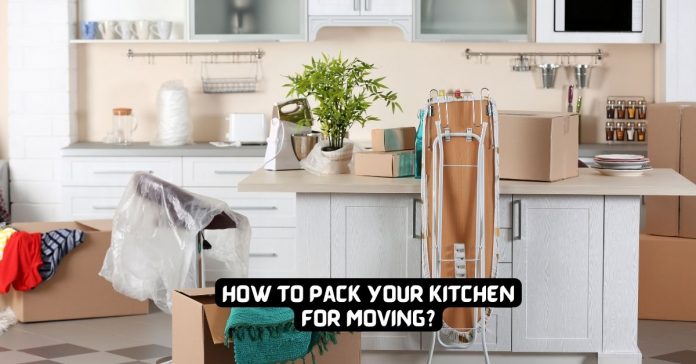Moving can be a daunting task, and packing up your kitchen is often one of the most challenging aspects. The fragility of items, varying sizes, and the sheer number of utensils can make it perplexing. However, with a well-organized approach, you can tackle this task efficiently and ensure a smooth transition to your new home.
How to Pack Your Kitchen for Moving?
Create an Inventory
Before diving into packing, take a thorough inventory of your kitchen items. Categorize them into groups such as utensils, cookware, and dishes. This step helps in identifying what you have and ensures nothing gets left behind during the move.
Gather Packing Supplies
Ensure you have the right packing supplies. This includes sturdy boxes, packing paper, bubble wrap, tape, and markers. Consider acquiring these materials well in advance, and you can often find free or discounted boxes from local stores.
Organize by Zones
Divide your kitchen into zones based on functionality. For example, separate the pots and pans from the glassware. Packing items zone by zone will make unpacking more manageable at your new home.
Wrap Fragile Items Securely
Fragile kitchenware needs extra care. Use ample packing paper and bubble wrap to secure delicate items like glassware and china. Consider placing paper or cloth between plates to prevent scratches.
Utilize Small Boxes for Heavy Items
Heavy kitchen items, like pots and pans, are best packed in small boxes. This not only makes them easier to carry but also distributes the weight more evenly, reducing the risk of the box breaking.
Label Boxes Clearly
Labeling is crucial for an organized move. Clearly mark each box with its contents and the designated room in your new home. This simple step will save you time and frustration during the unpacking process.
Pack Non-Essential Items Early
Identify items you rarely use and pack them early. This includes specialized kitchen gadgets or seasonal items. It clears clutter and allows you to focus on essential items as the moving day approaches.
Consider Specialized Containers
Invest in dish boxes for your fragile items. These boxes are designed with extra protection, including dividers for plates and glassware. They are worth the investment to ensure the safety of your delicate kitchen items.
Pack Appliances Safely
Secure your kitchen appliances by packing them in their original boxes if available. If not, use sturdy boxes and provide ample padding to protect them during transit. Remember to secure appliance cords to prevent damage.
Prepare an Essentials Box
Pack a box with essential items you’ll need immediately upon arrival at your new home. Include basics like utensils, plates, and a few cooking essentials. This box will save you from rummaging through numerous boxes on your first day.
Keep Manuals and Accessories Together
Place manuals and accessories in clearly labeled bags and keep them together. This ensures you can easily locate them when setting up your appliances in your new kitchen.
Secure Perishable and Non-Perishable Foods Separately
Handle perishable and non-perishable foods differently. Consume or donate perishables before moving day. Pack non-perishable items in sealed containers to avoid spills and consider donating excess items to minimize waste.
Load the Moving Truck Strategically
When loading the moving truck, place heavier boxes at the bottom and lighter ones on top. This strategy ensures the safety of fragile items and prevents breakage during transportation.
Unpacking and Setting Up in Your New Kitchen
Upon reaching your new home, start unpacking the kitchen systematically. Begin with the essentials box and gradually move to the less critical items. Set up your kitchen by zones, mirroring the organization of your previous home.
FAQs
- How do I find free or discounted moving boxes?
- Consider checking with local grocery stores, liquor stores, or online marketplaces where people often give away boxes after moving.
- What should I do with perishable food items before moving?
- Consume or donate perishable items before moving day to avoid waste and ensure a fresh start in your new home.
- Is it necessary to pack appliances in their original boxes?
- While it’s not mandatory, packing appliances in their original boxes provides additional protection. If unavailable, use sturdy boxes with ample padding.
- Why use small boxes for heavy kitchen items?
- Small boxes distribute weight more evenly, reducing the risk of breakage and making them easier to carry.
- How can I efficiently set up my new kitchen after the move?
- Unpack systematically, starting with the essentials box and organizing items by zones to streamline the process.
Conclusion
Packing your kitchen for a move can be a complex task, but with careful planning and organization, it becomes much more manageable. By following these steps, you can ensure that your kitchen items arrive at your new home intact, allowing you to settle in quickly and enjoy your new space.

